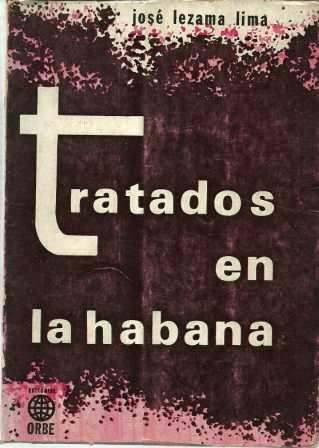4.1.2.2.14 “Treaties in Havana”, 1958, by José Lezama Lima (1910 – 1976)

“Treaties in Havana” contains a series of texts that contribute to shedding light on the national poetic tradition, the stage of the time, and some of the political and social contexts within which the poetic phenomenon took place. This book includes the section “Successive or Havana Coordinates,” which initially appeared in a regular column in the Diario de la Marina.
Here, he posits a poetics of Cubanness, with multiple foundations in politics, religion, and other elements associated with social consciousness and the way it was expressed in poetry. He articulates a defense of the values of Cuban cultural tradition, within which he grants a relevant role in its binding capacity to poetry, in the face of foreign penetration, namely North American, which tended to erode this spiritual condensation of the island.
This book contains some elements interconnected with the controversy that had been sustained with the generation of the “Revista de Avance”, particularly Jorge Mañach, and which extended to the Origenists, around the so-called generational struggle, in which, from a dialectical perspective, he reaffirms the elements of continuity over the disruptive ones.
In Lezam’s work, one can already see the attempt to arrive at a poetry that would be an antidote to the disintegration of the national consciousness, its causes and consequences in all spheres, including the political one. In this sense, his essays are the repository of Lezam’s faith in the potential of poetry to resist political frustration and at the same time reverse the status quo in the future, which is based on the deep-rooted optimism of Martí’s work.
The texts in this book are also linked to those he published during the Origenist period, contributing to the extensive body of work in which he derives an ethic from the concept of beauty and, in a certain way, points out a political function for art, never as a purpose but rather in the way it prevails in social consciousness and somehow defines its paths, as knowledge of reality and, at the same time, a hidden influence on it.








